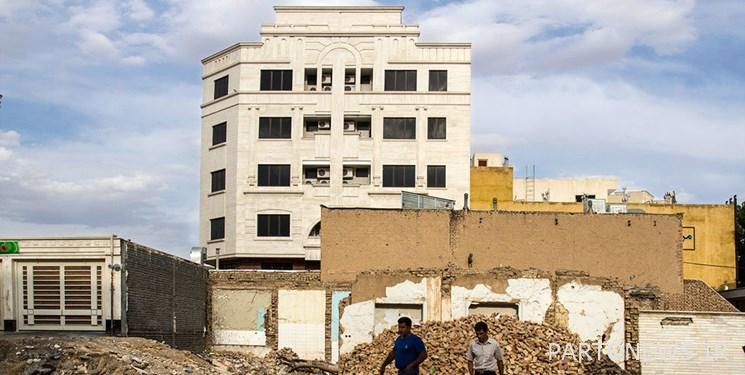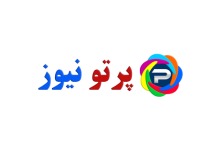Housing construction leap from the next 3 months/ 50% of Tehran’s dilapidated fabric was renovated

According to the economic correspondent of Fars news agency, Mehrdad Bazarpash announced the 19-point urban development incentive package regarding the physical incentive policies that include the renovation of worn-out and inefficient urban structures, with the aim of increasing the quality of life of citizens living in these structures and also advancing the goals of the housing production jump law. notified
Based on the details provided in this incentive package, the notified approvals have the characteristics of flexibility of the approval in relation to the special conditions of each city, neighborhood renewal approach, special opportunity for builders and owners, economic empowerment of the residents of dilapidated buildings through flexibility in the rules for the establishment of uses and with the approach It is the intertwining of housing and employment and creating added value on residents’ assets and increasing the quality of living space.
Also, untying the issue of license for residential plates below the quorum, the separation and construction of these units, increasing the permeability (accessibility) of the neighborhood and the participation of municipalities are among the other features of these notified approvals.
Details of the 19 physical incentive packages for the renovation of dilapidated structures in four groups of the types of incentives foreseen in the approval of the Supreme Council of Urban Planning and Architecture, including integrated regeneration at the scale of urban blocks, renovation at the scale of the main axes of the neighborhood, renovation in depth of the dilapidated urban fabric and incentive criteria for the renovation of parts It is non-combinable.
According to this incentive package, the task of implementing and monitoring the implementation is the responsibility of the Urban Regeneration Company under the Ministry of Roads and Urban Development. The purpose of forming an urban regeneration company is to guide and organize the necessary activities and measures in the field of revitalization, improvement and renovation of old, worn-out and inefficient urban structures and informal settlements within the framework of urban regeneration operational plans in order to improve the quality of the citizens’ living environment within the framework of policies The Ministry of Roads and Urban Development and the Supreme Council of Urban Planning and Architecture of Iran and the development and promotion of the aforementioned activities through the participation of municipalities, residents and owners, natural and legal persons with interests and local institutions are considered.
The subject of the company’s activity, according to Article 7 of the amendment of the company’s statutes approved by the Council of Ministers (2/13/2017), the subject of the urban regeneration company’s activity is the management of the company’s funds and activities in the field of comprehensive planning, control and supervision of preparation and implementation Urban improvement and renovation plans within the framework of urban regeneration operational plans and other measures related to the goals and duties of the company, including culture building, platform building, informing, designing, equipping resources, investing and attracting the participation of the public and the private sector and other institutions. and companies and municipalities and other relevant executive bodies.
Dilapidated urban tissues have many problems in the physical, environmental, social and economic fields, which have made the lives of residents in such tissues difficult.
Based on the surveys, about 90% of the population living in worn-out areas are exposed to the dangers of earthquakes. Therefore, due to existing problems, worn-out structures are highly vulnerable in case of an earthquake. However, earthquake crisis management theories are not used in the preparation of plans for the improvement of dilapidated structures and other urban plans.
The solutions that the earthquake crisis management offers in order to reduce the vulnerability of urban tissues are related to the fields that are examined in the urban planning system and especially the planning of the rehabilitation of worn-out tissues. The fields that are considered jointly between the improvement planning and earthquake crisis management are considered in the four axes of land use, accessibility, density and open space.
In order to investigate more dimensions of this issue, we went to Mohammad Ayeni, CEO of Iran’s Urban Regeneration Company, to discuss this issue with him.
The description of this conversation is as follows:
* We intend to strengthen the economic efficiency of construction
Fars: How many residential units is the construction capacity of the package recently announced by the Minister of Roads and Urban Development, and do you have an estimate?
Ritual: As you know, the texture is like a halo effect, that is, if you start building a house in one street, the next house will also start. It is slow at first, but then it increases logarithmically. According to our experience from the past and a series of encouragements approved by the city council, in 1989-1991 we hit a record of 100,000 units, which was mainly supported by Maskan Mehr bank facilities. In the current package, we heard the conversations of the builders, experts and consultants, and honestly, neither the government nor the municipalities have the ability to implement this project, nor are there enough financial resources for this, and there is no other option but to mobilize the private sector to come to the field and People share. The private sector does not accept this work due to the lack of economic efficiency. We strengthened a part of the economic efficiency deficit with the stimulus package.
Fars: Do you have a forecast of the IRR of this package in Tehran?
Ritual: These calculations are available. In Tehran, according to custom, the builders defined three areas, which include the area above Hemat, the area between Hemat and Azadi, and the area below Azadi. economic, but this number reaches less than 40% for the area under Azadi.
For this reason, a builder who knows that if he works in an area of Tehran, he will have an economic return, does not give himself a hard time and works in a worn-out context, then a series of incentives should be considered, such as giving a free construction permit, and from a social point of view, for As a builder, we explain that by building housing in this dilapidated context, you will save the households and it will be a reward for you in the afterlife.
We think that if the administrative bureaucracy is dismantled and the municipalities give permits and density early, and for example, the incentive floor, easier parking and not counting the terrace and balcony in the density, it will be very pleasant for the builders. I believe that if all municipalities implement this package and give these concessions with less trouble, we will see a significant jump in the next 3 months, although this happened in Tehran and in some areas we had a 480% growth.
* We predict a jump in construction for the next 3 months
Fars: Was this package implemented as a pilot in Tehran?
Ritual: Tehran was like other regions of the country, but it had a series of other privileges. In this resolution, we allowed that each municipality can define an incentive package according to the specific conditions of its city. In Tehran, it was decided that instead of preparing a special plan for block renovation and approving it in the commission of Article 5 of the province, if it goes up to 400 meters, we will give permission for two floors. This is not the case in other cities and a special plan must be prepared for each case and approved by the Article 5 Commission. I believe that with the help of God, we will give a very good report to the people in the next 3 months.
Fars: If you had a report from the public indicating that any group such as the municipality is not cooperating with this package, please give it to the media so that we can publish this news with the help of the auditing organization and the people’s problem will be solved as soon as possible.
Ritual: I also said on TV that anyone who went to the municipality and did not receive a discount of at least 50% should report to the 30008612 system. Now I will announce the same issue in Fars news agency
Between 20 and 30 percent of the buildings were destroyed by 20 to 100 percent, Alhamdulillah, there were no casualties, but the restoration of the worn-out fabric, in addition to improving the urban environment, will save human lives.

* Renovation of worn tissue and the mystery of increased density
Fars: One criticism of your work is that your model ultimately increases density and has a negative effect on urban planning in the long run.
Ritual: In relation to this matter, those who are not in the heart of the subject of worn out tissue say this and only say these words with studies on paper. For example, Gharb town in Tehran has a density of 5 floors, but we can see that there are many towers in this area, however, it is known as a good area in the city because it has wide streets, green spaces, and various services.
Fars: Actually, do you want to say that we have no choice but to do this in the worn-out fabric?
Ritual: No, I do not believe this.
Fars: So, our idea of a worn-out texture is a narrow street, and we feel that if it is built here, the existing four floors will become 6 floors, while this is not the case and it should not be looked at from one direction, because with the building becoming 6 floors, the street Will it be widened and the conditions of access will be improved?
Ritual: I want to say that according to the urban planning standard per capita, I have calculated many times and based on people’s capacity in 10 thousand square meters or one hectare, 55% should be allocated to housing and 45% to services, and in that 55%, 60% of the employment level And there should be 40% of the courtyard where 60% of the 3-story building will be built.
With this index, 80 120-meter apartments can be built per hectare or instead 120 80-meter apartments. At the same time, on average, the density of people per hectare is 170, and as long as the population has not reached this level of urbanization, there is room to add because we have 166,000 hectares of population in which 20 million people live. .
Nearly 90% of worn-out fabric locations still have more loading capacity. The dilapidated fabric consists of a series of one-meter or maximum 2-meter alleys that cars cannot pass through and the houses do not have parking spaces. It has 5 floors, it is earthquake resistant, what’s wrong with it? In addition to this block construction and the use of density, a series of spaces are also considered for services, an example of which can be seen in Khani Abad or Takhti Street. If we follow the national building regulations, there is no worry about earthquakes, but friends who were not in executive work are against density.
In the areas of Tehran that were renovated, the number of residential units increased by 40%, but the population increased by 7%. Since families in recent years moved towards one, two, and three-person households, there was no problem in terms of size, and couples could buy a house with a larger size and in higher areas over time. Renovation makes it possible to build 40 or 50 meter units. Therefore, the increase in the number of residential units does not necessarily mean an increase in per capita.

* 50% of Tehran’s worn-out fabric has been renovated
Fars: What is the ratio of Tehran’s dilapidated fabric to the whole city? And how unstable is it? What population lives in worn out fabric?
Ritual: 5% of the city of Tehran, i.e. 4450 hectares, is considered worn out and 50% of it has been renovated. In Tehran, more than one million people live in dilapidated housing. Of course, pure density means that approximately 15% of Tehran’s population lives in that dilapidated fabric, and 50% of these people are directly at risk and the rest are at indirect risk. A 6-magnitude earthquake can destroy these dilapidated units, and even a 5-magnitude earthquake can cause debris, but with renovation, they will be resistant to 7 and 7.5 earthquakes, and the loss of life will be minimized.
Fars: One of the problems that have been brought to us by the audience regarding the worn-out texture is the issue of cultural heritage’s opposition to the renovation of some textures. Have any measures been taken to solve this problem?
Ritual: According to this recipe, only residential units outside the historical context are included, and the historical context is out of the scope of these incentives.
Fars: Thank you for your time for this interview.
Ritual: Thank you that this issue was important to you, God willing, with the coordination of the country’s media space, the people will receive the works and blessings of this issue.
end of message/

